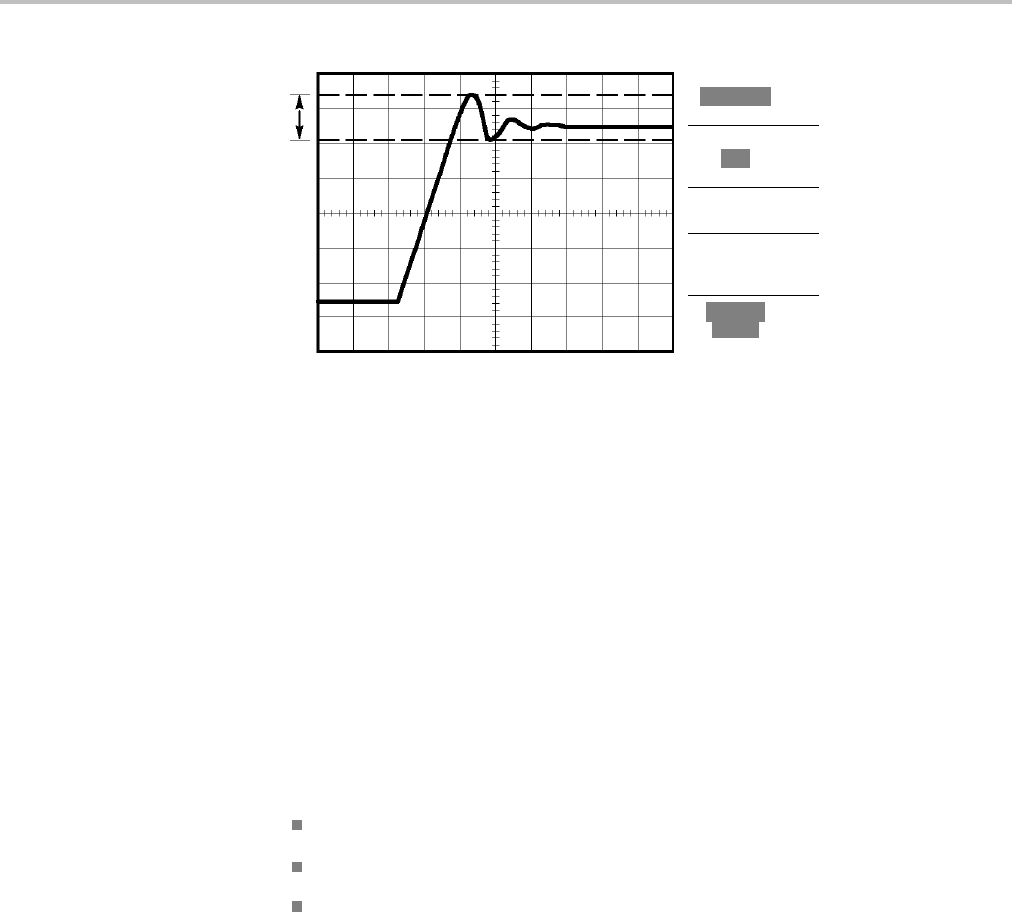User manual
Table Of Contents
- toc
- General safety summary
- Compliance Information
- Preface
- Getting Started
- Operating Basics
- Understanding Oscilloscope Functions
- Application Examples
- Taking Simple Measurements
- Using Autorange to Examine a Series of Test Points
- Taking Cursor Measurements
- Analyzing Signal Detail
- Capturing a Single-Shot Signal
- Measuring Propagation Delay
- Triggering on a Specific Pulse Width
- Triggering on a Video Signal
- Analyzing a Differential Communication Signal
- Viewing Impedance Changes in a Network
- Data Logging
- Limit Testing
- Math FFT
- USB Flash Drive and Device Ports
- USB Flash Drive Port
- File Management Conventions
- Saving and Recalling Files With a USB Flash Drive
- Using the Save Function of the Print Front Panel Button
- USB Device Port
- Installing the PC Communications Software on a PC
- Connecting to a PC
- Connecting to a GPIB System
- Command Entry
- Connecting to a Printer
- Printing a Screen Image
- Reference
- Appendix A: Specifications
- Appendix B: TPP0101 and TPP0201 Series 10X Passive Probes Inform
- Appendix C: Accessories
- Appendix D: Cleaning
- Appendix E: Default Setup
- Appendix F: Font Licenses

Application Examples
Type
Amplitude
Source
CH1
ΔV 640mV
Cursor 1
1.46V
Cursor 2
820mV
Measuring Pulse Width
If you are analyzing a pulse waveform and you want to know the width of the
pulse, follow these steps:
1. Push the Cursor button to see the Cursor Menu.
2. Push Type ► Time.
3. Push Sou
rce ► CH1.
4. Push the Cursor 1 option button.
5. Tu rn the multipurpose knob to place a cursor on the rising edge of the pulse.
6. Push the Cursor 2 option button.
7. Turn the multipurpose knob to place a cursor on the falling edge of the pulse.
You can see the following measurements in the Cursor Menu:
The t
ime at Cursor 1, relative to the trigger.
The time at Cursor 2, relative to the trigger.
The Δ (delta) time, which is the pulse width measurement.
TBS1000 Series Oscilloscopes User Manual 37










